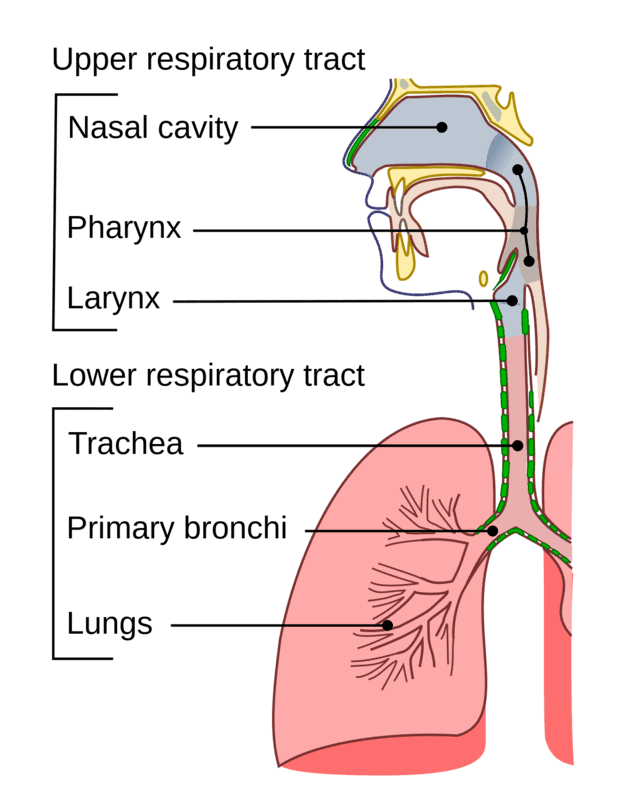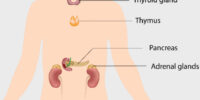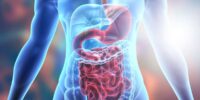What Is The Respiratory System? Anatomy, Functions, And Common Conditions

The respiratory system is an essential component of the human body, responsible for the exchange of oxygen and carbon dioxide between the body and the environment.
It is composed of various organs and tissues that work together to facilitate the inhalation and exhalation of air, and to maintain optimal levels of oxygen and carbon dioxide in the bloodstream.
Understanding the anatomy and functions of the respiratory system is crucial for maintaining good health, as respiratory disorders can lead to a range of serious health problems.
This article provides an overview of the respiratory system, including its anatomy, functions, and common conditions.
It explores the different parts of the respiratory system and how they work together to enable us to breathe.
Additionally, the article discusses some of the most common respiratory conditions, their causes, and how they can be managed.
By the end of this article, readers will have a better understanding of their respiratory system and how to take care of it to maintain good health.
Key Takeaways
- The respiratory system is responsible for gas exchange between the body and environment and consists of organs and tissues for inhalation and exhalation.
- The anatomy of the respiratory system includes the nose, trachea, lungs, diaphragm, pharynx, larynx, bronchial tubes, alveoli, and pulmonary capillaries, which are all crucial for maintaining good health and proper oxygen levels.
- Common respiratory conditions include asthma, COPD, pneumonia, bronchitis, and lung cancer, which can lead to serious health problems and require medication, lifestyle changes, and surgery in severe cases.
- The efficiency of gas exchange at the alveoli is essential for maintaining proper oxygen levels, and any inflammation or obstruction in the respiratory system can lead to difficulty breathing and other health complications.
The Importance of the Respiratory System for Human Health
The respiratory system plays a critical role in maintaining human health by facilitating gas exchange between the body and the environment. Oxygen is taken in, and carbon dioxide is removed from the body through the process of respiration.
The respiratory system consists of several organs, including the lungs, bronchi, trachea, and nose, that work together to ensure that the body receives an adequate supply of oxygen and gets rid of excess carbon dioxide.
The respiratory system is also responsible for regulating the pH balance of the body by controlling the levels of carbon dioxide. When carbon dioxide levels increase, the respiratory system responds by increasing respiration rate, allowing more carbon dioxide to be exhaled.
Conversely, when carbon dioxide levels decrease, the respiratory system slows down respiration rate, allowing more carbon dioxide to build up in the body. This regulation is essential to maintaining homeostasis and ensuring that the body functions properly.
The Anatomy of the Respiratory System: Understanding the Different Parts
Understanding the different parts of the respiratory system requires a basic knowledge of human physiology and the intricate workings of the body’s organs. The respiratory system is composed of several organs and structures that work together to facilitate the exchange of gases between the body and the environment.
Here are the different parts of the respiratory system:
- Nose: The nose is the primary organ of the respiratory system. It is responsible for filtering, warming, and moistening the air that enters the body.
- Trachea: The trachea, also known as the windpipe, is a tube that connects the nose and mouth to the lungs. It is lined with tiny hairs called cilia, which help to trap and remove harmful particles from the air.
- Lungs: The lungs are the main organs of the respiratory system. They are responsible for the exchange of oxygen and carbon dioxide between the body and the environment.
- Diaphragm: The diaphragm is a large, dome-shaped muscle that separates the chest cavity from the abdominal cavity. It plays a crucial role in breathing by contracting and relaxing to create changes in lung volume, which allow air to be drawn in and expelled from the body.
Understanding the anatomy of the respiratory system is key to understanding how it functions and how it can be affected by various conditions. By knowing the different parts and their functions, we can appreciate the complexity of this system and better appreciate its importance in maintaining our health and well-being.
The Functions of the Respiratory System: How It Works to Keep Us Breathing
One of the most vital processes in the human body is the exchange of gases, and the respiratory system plays a crucial role in facilitating this process.
The primary function of the respiratory system is to take in oxygen from the air and expel carbon dioxide, which is a waste product of cellular respiration. This process is made possible by the lungs, which are the main organs of the respiratory system, and the airways, which include the trachea, bronchi, and bronchioles.
The respiratory system also helps regulate the body’s pH balance by controlling the levels of carbon dioxide and oxygen in the blood.
It also aids in the sense of smell, as the nose is part of the respiratory system and contains olfactory receptors that are responsible for detecting various scents.
Additionally, the respiratory system helps protect the body from harmful substances in the air, such as dust and pollutants, by trapping them in mucus and expelling them through coughing or sneezing.
Overall, the respiratory system is a complex network of organs and tissues that work together to ensure the body’s proper oxygenation and removal of carbon dioxide.
The Role of the Nose and Mouth in the Respiratory Process
As air enters the body, it first passes through the nose and mouth, which act as the gateway to the respiratory process. The nose and mouth play important roles in the respiratory process, as they are responsible for warming, moistening, and filtering the air before it reaches the lungs. The nose is lined with tiny hairs called cilia, which trap dust and other particles in the air, preventing them from reaching the lungs. The nasal cavity is also lined with mucous membranes, which help to moisten the air and trap any additional particles.
The mouth, on the other hand, plays a less significant role in the respiratory process, as it does not have the same filtering and warming capabilities as the nose. However, it can still be used to breathe in air, particularly during exercise or when the nose is congested. Additionally, the mouth is important for producing speech and communicating with others. Overall, while the nose and mouth may be overlooked in the respiratory process, they are vital components that help to ensure that the air we breathe is properly filtered and warmed before it reaches the lungs.
| Function | Nose | Mouth | |
|---|---|---|---|
| Filtering | Cilia and mucous membranes trap dust and particles | Limited filtering capabilities | |
| Warming | Warms air as it passes through nasal cavity | Less effective than nose | |
| Moistening | Mucous membranes help to moisten air | Less effective than nose | |
| Breathing | Primary route for breathing | Used as secondary route during exercise or congestion | |
| Speech | Not directly involved in speech | Important for producing speech | …as it helps to control the flow of air through the vocal cords. |
The Function of the Pharynx and Larynx in Breathing and Speaking
The pharynx, also known as the throat, is an important part of the respiratory system. It is a muscular tube that connects the nose and mouth to the esophagus and trachea. The pharynx serves as a passageway for air, food, and liquids. During the process of breathing, air passes through the pharynx into the trachea and then into the lungs.
The pharynx also plays a crucial role in speech production. The muscles in the pharynx contract to modify the sounds produced by the vocal cords, allowing us to form words and communicate with others.
The larynx, or voice box, is located just below the pharynx. It is a small, cartilaginous structure that contains the vocal cords. The larynx plays a key role in speech production by controlling the airflow through the vocal cords. When we speak, the muscles in the larynx contract to vibrate the vocal cords and produce sound.
The larynx also helps to protect the airway by closing off the glottis, the opening between the vocal cords, during swallowing to prevent food and liquids from entering the lungs.
Overall, the pharynx and larynx are essential components of the respiratory system, ensuring proper breathing and allowing us to communicate with others.
The Trachea and Bronchi: How They Transport Air to the Lungs
Air is transported from the pharynx into the trachea, a rigid tube lined with cilia and mucus, which branches into two bronchi, one leading to each lung, where gas exchange occurs.
The trachea, also known as the windpipe, is about 4.5 inches long and 1 inch in diameter. It is supported by 16 to 20 C-shaped rings of cartilage, which prevent it from collapsing and obstructing the airway.
Inside the trachea, the walls are lined with ciliated epithelial cells that propel mucus, dust, and other foreign particles upward and out of the respiratory system. The mucus traps the particles and prevents them from entering the lungs, where they could cause inflammation and infection.
The trachea divides into two primary bronchi, which enter the lungs at the hilum, a depression on the medial surface of each lung. The right primary bronchus is wider, shorter, and more vertical than the left primary bronchus, which allows foreign objects to more easily enter the right lung.
To better understand the importance of the trachea and bronchi, consider the following bullet points:
- The trachea and bronchi are essential for the transport of air from the outside environment to the lungs, where gas exchange occurs.
- The ciliated epithelial cells lining the trachea and bronchi help to prevent infection and inflammation by removing foreign particles and bacteria from the respiratory system.
- The left and right primary bronchi differ in size and shape, which can affect the risk of foreign object aspiration and bronchial obstruction.
The Alveoli: The Site of Gas Exchange in the Lungs
Gas exchange in the lungs occurs at the alveoli, tiny sacs lined with thin-walled epithelial cells and surrounded by pulmonary capillaries. These alveoli are found in the lungs, where they play a crucial role in respiration by allowing the exchange of gases between the air in the lungs and the bloodstream.
The walls of the alveoli are composed of a single layer of epithelial cells, which are only one cell thick. This structure allows for rapid diffusion of gases across the alveolar membrane. Oxygen from the air diffuses across the alveolar membrane and into the bloodstream, while carbon dioxide from the bloodstream diffuses across the alveolar membrane and into the air in the lungs.
The alveoli are highly specialized structures that are responsible for the efficient exchange of gases between the lungs and the bloodstream. The pulmonary capillaries that surround the alveoli are densely packed, allowing for a large surface area for gas exchange. The alveoli are also coated with a thin layer of fluid, which helps to keep the alveolar membrane moist and allows for easier diffusion of gases.
The efficiency of gas exchange at the alveoli is essential for maintaining proper oxygen levels in the body and removing carbon dioxide, a waste product of metabolism, from the bloodstream. Any damage or disease that affects the structure or function of the alveoli can lead to respiratory problems and potentially life-threatening conditions.
Common Respiratory Conditions: Understanding and Managing Them
The alveoli are essential components of the respiratory system, where gas exchange occurs. However, the respiratory system is prone to various conditions that can affect its normal functioning. Understanding these conditions is crucial in managing them effectively.
Common respiratory conditions include asthma, chronic obstructive pulmonary disease (COPD), pneumonia, bronchitis, and lung cancer. Asthma is a chronic disease that causes inflammation and narrowing of the airways, leading to difficulty in breathing. COPD, on the other hand, is a progressive disease that obstructs airflow, making it difficult to breathe.
Pneumonia is an infection that inflames the air sacs in one or both lungs, leading to coughing, fever, and difficulty breathing. Bronchitis involves inflammation of the bronchial tubes, leading to coughing, chest pain, and shortness of breath. Finally, lung cancer is a condition where abnormal cells grow and multiply uncontrollably in the lungs, leading to the formation of tumors.
Managing these conditions involves various approaches, including medication, lifestyle changes, and surgery in severe cases. It is crucial to seek medical advice and treatment promptly, as some of these conditions can be life-threatening.
Conclusion
In conclusion, the respiratory system is a vital part of human health that enables us to take in oxygen and expel carbon dioxide. Understanding its anatomy and functions is crucial in comprehending how it works to keep us breathing.
The nose and mouth, pharynx and larynx, trachea and bronchi, and alveoli all play a significant role in the respiratory process.
However, the respiratory system is also susceptible to various conditions, including asthma, chronic obstructive pulmonary disease (COPD), and pneumonia, which can affect breathing and overall health. Proper management and treatment of these conditions are essential in maintaining respiratory health.
Overall, the respiratory system is a complex and crucial system that plays a significant role in our daily lives and should be given the attention and care it deserves.









